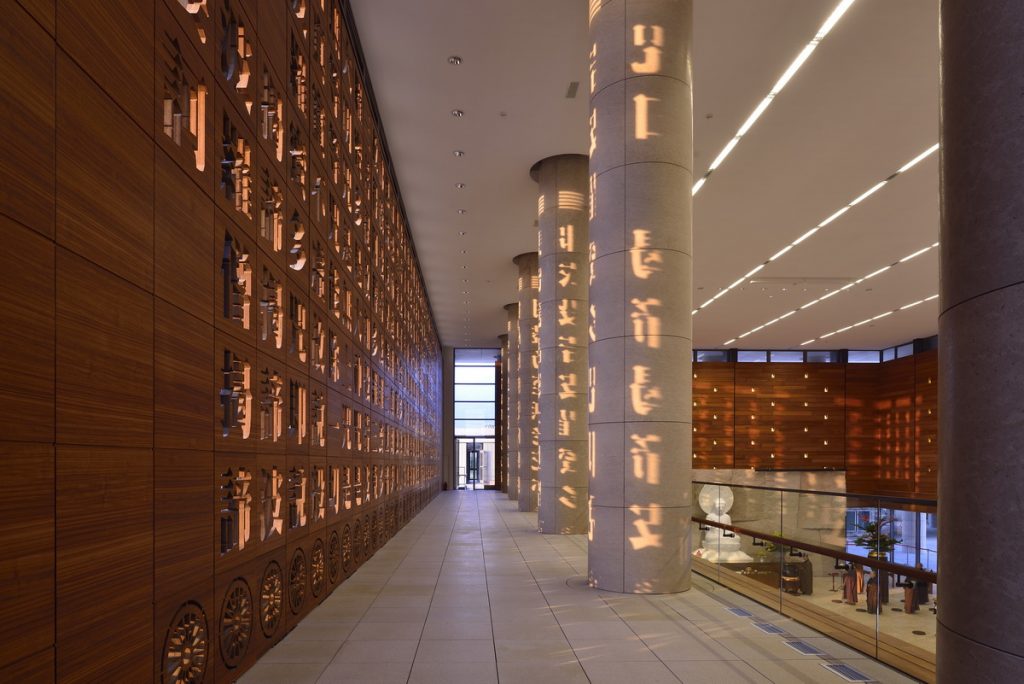Introduction
Zen-inspired minimalism extends beyond the realm of personal living spaces and finds its place in public spaces and buildings as well. In this expanded article, we will delve deeper into the concept of Zen-inspired minimalism, exploring how it influences the design of various public spaces and buildings. From serene meditation centers to contemporary art galleries, these examples showcase the power of simplicity, mindfulness, and tranquility in creating harmonious environments.
The Serenity of Meditation Centers
Meditation centers serve as sanctuaries for individuals seeking peace, introspection, and spiritual growth. The principles of Zen-inspired minimalism naturally align with the purpose of these spaces. The design focuses on creating an atmosphere of serenity and stillness, allowing visitors to disconnect from the chaos of the outside world.

One notable example is the Dharma Drum Mountain Meditation Center in Taiwan. Designed by architect Kris Yao, the Water Moon Monastery embodies Zen-inspired minimalism through its clean lines, minimalist aesthetics, and emphasis on natural elements. The use of natural materials like wood and stone, along with an abundance of natural light, creates a calming ambiance conducive to meditation and self-reflection.

Contemporary Art Galleries and Museums
Contemporary art galleries and museums often adopt Zen-inspired minimalism to create an unobtrusive backdrop that allows the artwork to take center stage. The focus is on providing a quiet and contemplative space where visitors can engage with the art on a deeper level.

The Dia:Beacon in New York exemplifies this design approach. Housed in a former Nabisco box-printing factory, the gallery utilizes the expansive space to showcase large-scale artworks within a minimalist setting. Clean white walls, vast open areas, and strategically placed natural light sources create a serene atmosphere that encourages visitors to explore and appreciate the art in a calm and reflective manner.
Zen-Inspired Architecture in Public Buildings
Zen-inspired minimalism can also be seen in the design of public buildings, where simplicity and functionality merge to create spaces that prioritize the well-being of occupants. Examples include libraries, community centers, and government buildings that aim to provide a sense of tranquility and balance.

One remarkable example is the Sendai Mediatheque in Japan, designed by architect Toyo Ito. The building’s open plan, minimalistic interiors, and use of natural light reflect Zen aesthetics. Its fluid and flexible spaces, devoid of unnecessary partitions, encourage a sense of connection and harmony. The building’s design effortlessly blends with its surroundings, blurring the boundaries between indoor and outdoor spaces.
Conclusion
Zen-inspired minimalism transcends personal living spaces and finds expression in public spaces and buildings, offering respite and serenity to individuals seeking solace, inspiration, or a moment of reflection. From meditation centers to contemporary art galleries and public buildings, the use of clean lines, natural materials, and an emphasis on simplicity creates environments that foster a sense of tranquility, mindfulness, and harmony. By embracing Zen-inspired minimalism, these spaces invite visitors to engage with their surroundings and connect with the present moment, creating a profound and lasting impact on their well-being.

At the Art of Zen we have a wide selection of original Japanese style art prints in the ukiyo-e and Japandi style. Add some zen to your space with some art from the Art of Zen shop.
Photo credit: the featured image at the top of Water Moon is by Jeffrey Cheng.




0 Comments